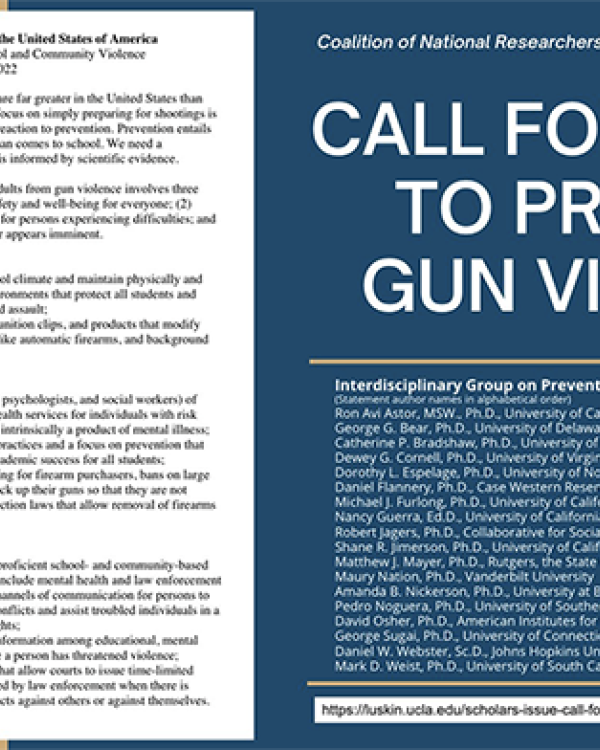
The recent mass shootings across the country—and there have been 214 mass shootings in the first five months of 2022—are another painful reminder of failed efforts to stop the kind of gun violence that occurred at Sandy Hook Elementary School nearly ten years ago. An interdisciplinary group of scholars who have studied school safety and violence prevention for decades, including Professor Shane Jimerson of UC Santa Barbara’s Gevirtz School, are calling for immediate government action to initiate scientifically-informed actions to reduce gun violence.
After the 2018 shootings at Marjorie Stoneman Douglas High School, The Interdisciplinary Group on Preventing School and Community Violence developed a “Call for Action to Prevent Gun Violence in the United States of America” that was endorsed by numerous professional organizations in education, psychology, and allied fields, representing 5 million professionals working in and with schools. The evidence base for that call was published in 2019 (Flannery et al.). There is now even more research evidence in support of the eight points in this plan. According to one of the experts, Professor Pedro Noguera, Dean of the Rossier School of Education at the University of Southern California, “Scientifically, we know what to do to reduce gun violence. The question is whether our leaders will do it.”
New research shows that comprehensive background checks are foundational to keeping guns from dangerous individuals, especially when coupled with licenses to purchase handguns. Licensing and bans on large capacity ammunition feeding devices prevent fatal mass shootings. Laws requiring gun owners to lock away their firearms so that they are inaccessible to underage youth prevent deaths to teens from suicides and homicides. Extreme risk protection laws are a promising and practical policy for removing firearms when there are clear threats of potential lethal violence and have been used to thwart plans to commit mass shootings.
“As clearly outlined in the ‘Call to Action to Prevent Gun Violence,’ the evidence is abundant regarding steps to reduce gun violence, however, elected officials have not yet developed the legislation necessary to protect children and families in schools and communities throughout the country," says Professor Jimerson. “In the absence of such legislation, regulations, resources, and infrastructure, it is only a matter of time before the next devastating act of gun violence takes the lives of children and adults.”
Jimerson is a Professor of Counseling, Clinical, and School Psychology and a Nationally Certified School Psychologist. He is recognized by The American Academy of Experts in Traumatic Stress as a Board-Certified Expert and Diplomat and is included in their international registry of Experts in Traumatic Stress with specialization in working with children, families, and schools.
In addition to the updated 8-point plan, the coalition has highlighted some resources for educators, school leaders, and parents in supporting the families and staff they serve:
Responding to a Mass Casualty Event at a School: General Guidance for the First Stage of Recovery
Responding to School Violence: Tips for Administrators
Talking to Children About Violence: Tips for Parents and Teachers